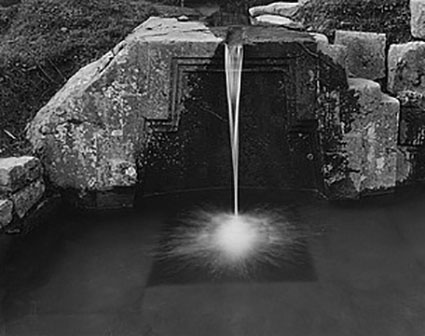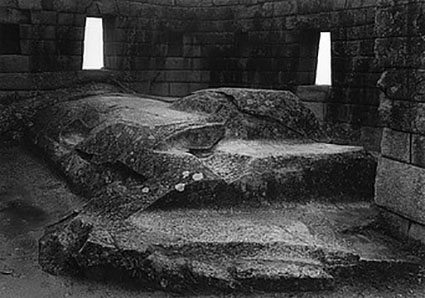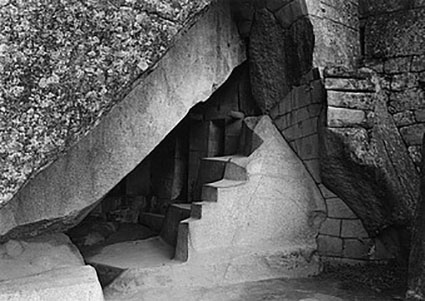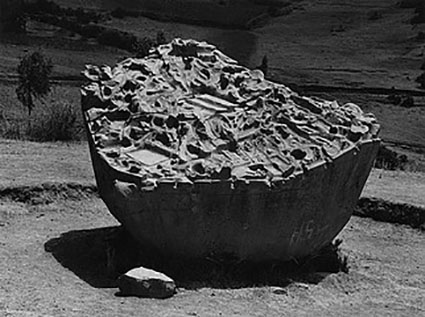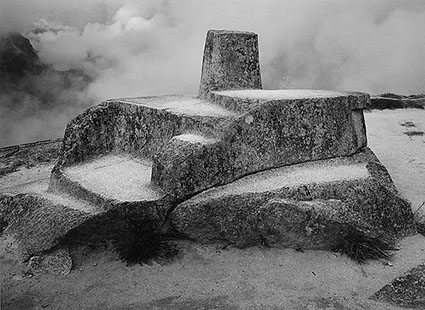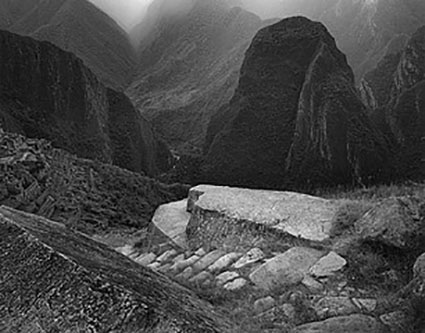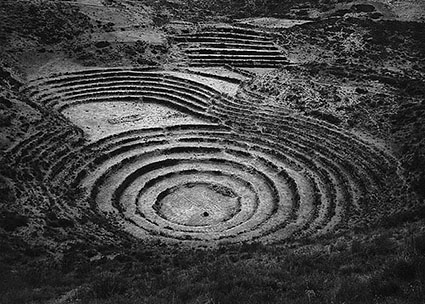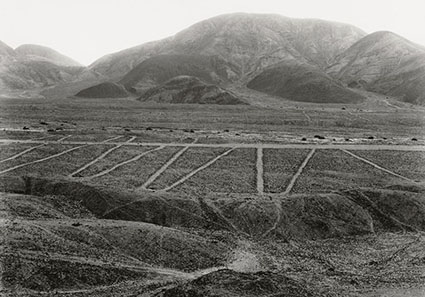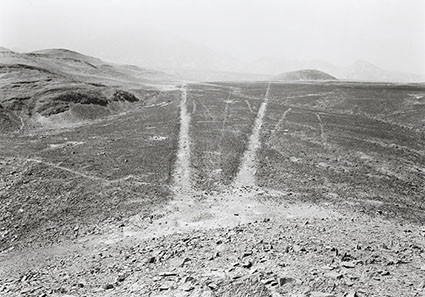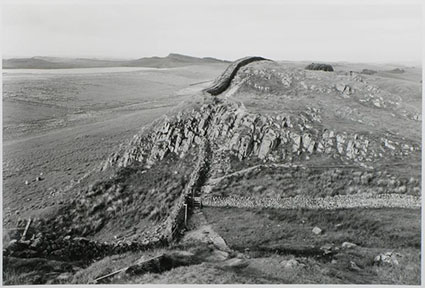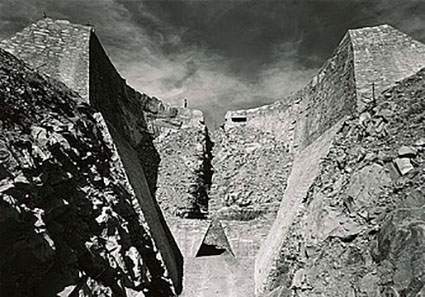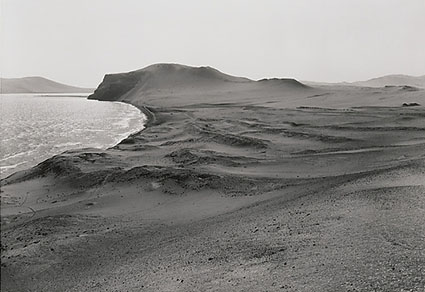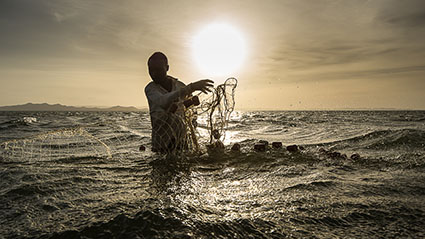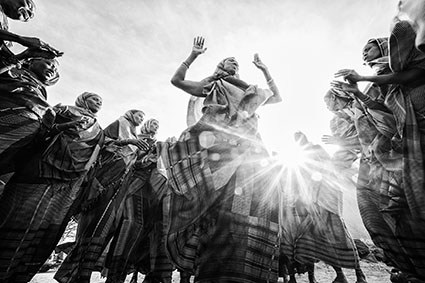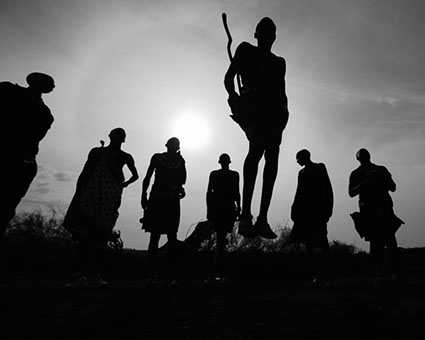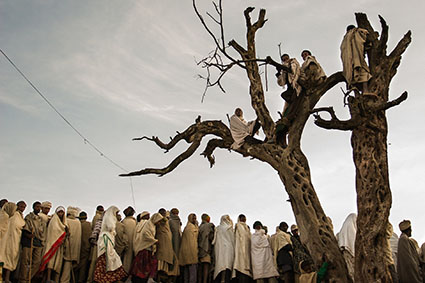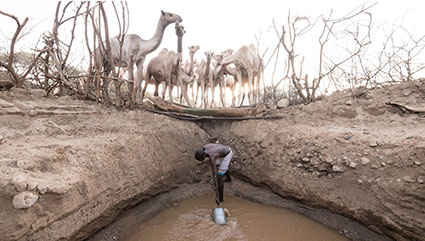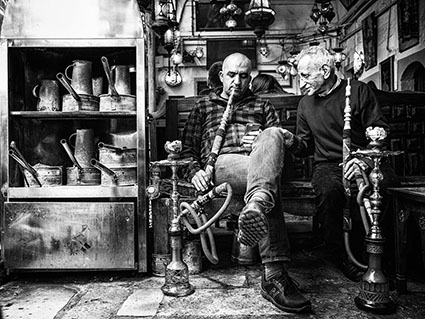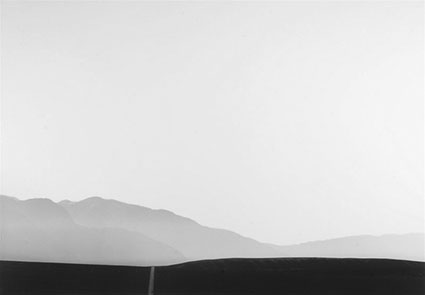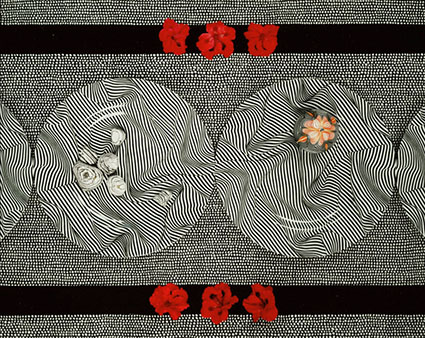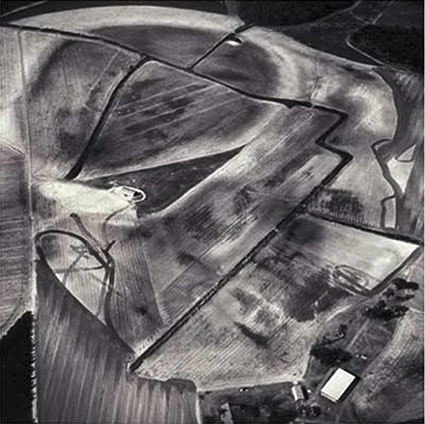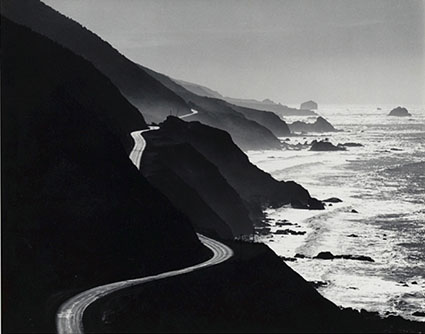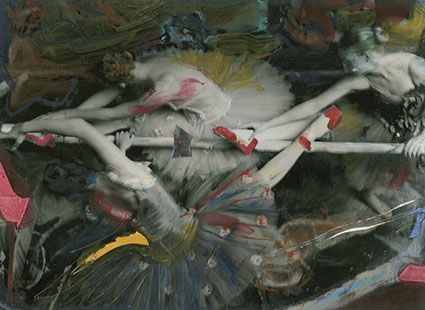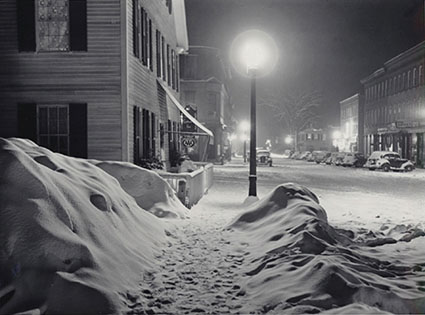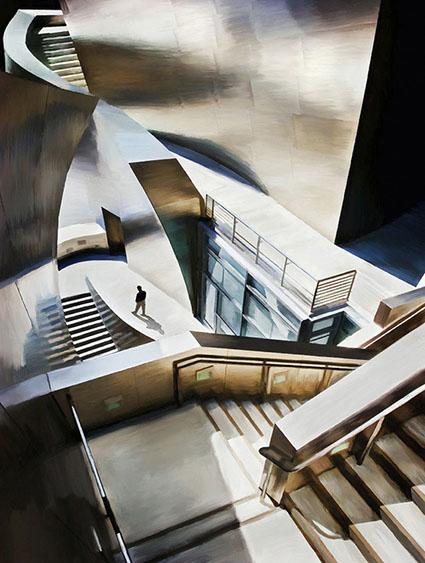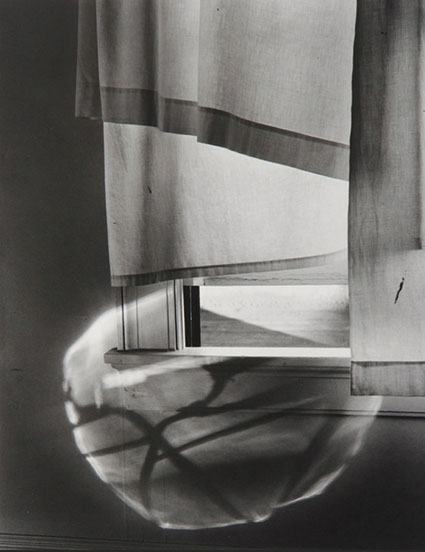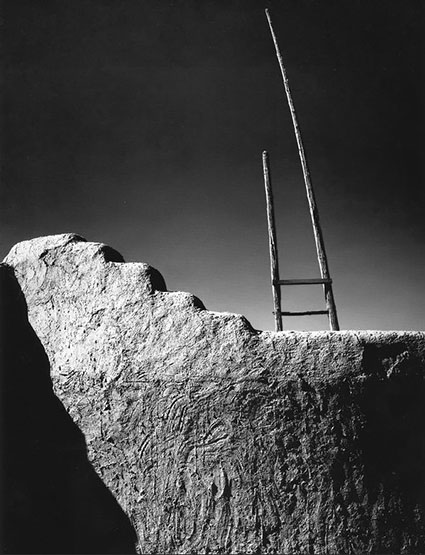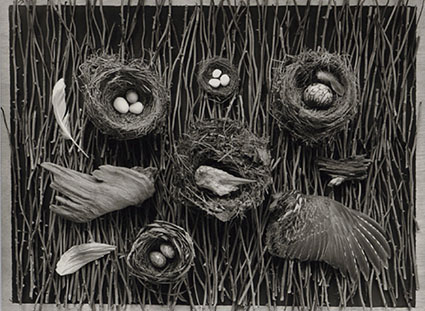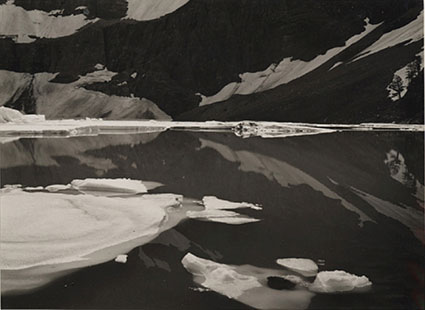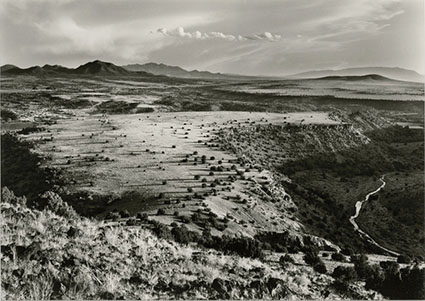Photographer Wynn Bullock – Conversations with the Masters
Enjoy this rare interview with photographer Wynn Bullock.
Read 24 great quotes by Wynn Bullock.
View 12 Great Photographs By Wynn Bullock here.
Explore The Essential Collection Of Quotes By Photographers.
Explore 12 More 12 Great Photographs Collections here.
Explore The Essential Collection Of Documentaries On Photographers
7 Great Quotes By Photographer Pete Turner
Enjoy this collection of quotes by photographer Pete Turner.
“If photography has developed a special language it should be welcomed as an extension of our senses and seen for what it is – the first faulting steps of an infant medium towards maturity.” – Pete Turner
“It has been said a thousand times that photography is a universal language. To accept this notion is to ignore the fact that its meanings cannot be translated in anything other than a woolly and imprecise manner.” – Pete Turner
“What have I done wrong?” -he said later.” Nothing, I think. I am steadily surprised that there are so many photographers that reject manipulating reality, as if that was wrong. Change reality! If you don’t find it, invent it!” – Pete Turner
“Looking at photographs, like taking them, can be joyful, sensuous pleasure. Looking at photographs of quality can only increase that pleasure.” – Pete Turner
“Color takes my work into another dimension. It’s the way I see. I’ve always been drawn to the colors of nature, and nature is a wonderful teacher.” – Pete Turner
“Ultimately, simplicity is the goal – in every art, and achieving simplicity is one of the hardest things to do. Yet it’s easily the most essential.” – Pete Turner
“A photographers work is given shape and style by his personal vision. It is not simply technique, but the way he looks at life and the world around him.” – Pete Turner
Find out more about Pete Turner here.
Explore 12 Great Photographs By Great Photographers
Explore The Essential Collection Of Quotes By Photographers.
Explore The Essential Collection Of Documentaries On Photographers.
12 Great Photographs By David DuChemin
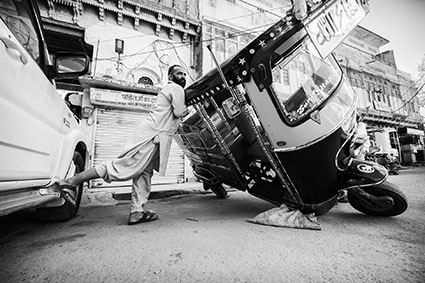
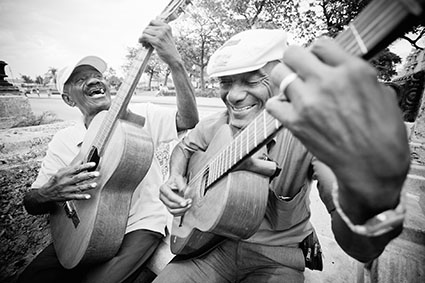
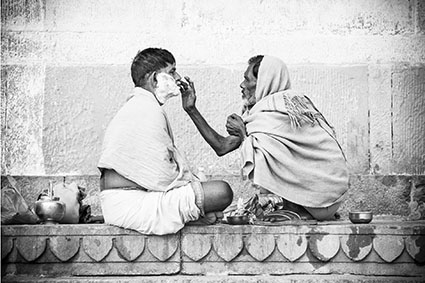
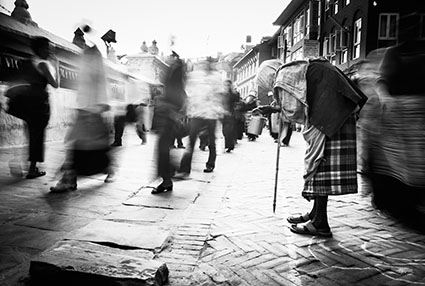

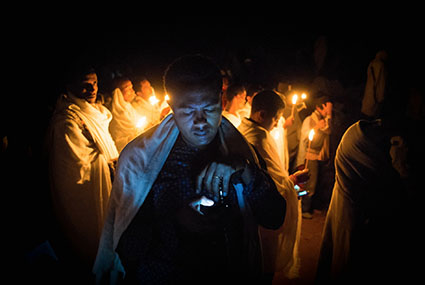
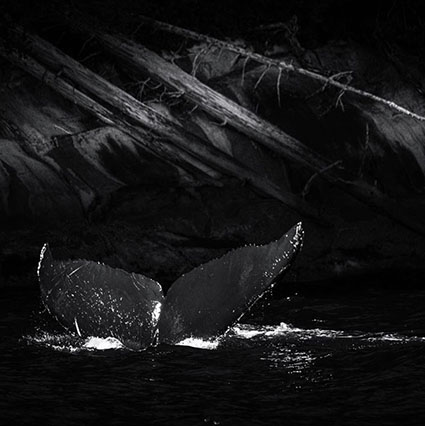
Enjoy this collection of photographs by David DuChemin.
Find out more about David DuChemin here.
Read David DuChemin’s Q&A here.
17 Great Quotes By Photographer David DuChemin
Enjoy this collection of quotes by photographer David DuChemin.
“The cliché comes not in what you shoot but in how you shoot it.” – David DuChemin
“Learning to see is not about having open eyes; it’s about having an open mind.” – David DuChemin
“The more curious we are the more creative we become.” – David DuChemin
“Creativity is about two things; the way we think, and the way we turn those thoughts into reality.” – David DuChemin
“It is we show put the humanity, the vision, and the poetry into our photographs.” – David DuChemin
“When we look at our photographs and find not the slightest reflection of ourselves, it is a good sign that our images have lost their souls.” – David DuChemin
“The idea of authenticity carries such value because we know how difficult it is to be fully ourselves.” – David DuChemin
“Anyone can take a picture of poverty; it’s easy to focus on the dirt and hurt of the poor. It’s much harder—and much more needful—to pry under that dirt and reveal the beauty and dignity of people that, but for their birth into a place and circumstance different from our own, are just like ourselves. I want my images to tell the story of those people and to move us beyond pity to justice and mercy.” – David DuChemin
“A representational photograph says, ‘This is what Vienna looked like.’ An interpretational photograph goes one better and says, ‘This is what Vienna was like. This is how I felt about it.” – David DuChemin
“‘What is it about?’ is not the same as ‘What happened?’” – David DuChemin
“It’s the difference between your wife’s passport photograph and the portraits you took when you got engaged. Both may have been created with similar technology, but what stands in that great gulf between them are the passion you have for your wife, the knowledge you have of her personality, and your willingness to use your craft, time, and energy to express that. One says, “She looks like this.” The other says, “This is who she is to me. It’s how I feel about her. See how amazing she is.” – David DuChemin
“Perfection is overrate, and not to be confused with mastery.” – David DuChemin
“Photographers, like few other kinds of artists I can imagine, have an insanely personal relationship with their gear.” – David DuChemin
“Knowing failure is part of our process, and leads to new ideas, stronger work, and more honest questions, liberates us to peer, a little less frightened, into the unknown.” – David DuChemin
“You yourself are unique–you have ways of seeing your world that are unlike those of anyone else–so find ways to more faithfully express that, and your style will emerge.” – David DuChemin
“The real failure is to rob this world of the contribution only you can make, and to fail to make work that truly gives you that ‘this is what I was created to do’ feeling that has no equal.” – David DuChemin
“I will never reach the end of this journey. I’ll never arrive at a point where others have nothing to teach me.” – David DuChemin
Find out more about David DuChemin here.
Read David DuChemin’s Q&A here.
Photographer Charles Sheeler – American Precisionist – Video
“Charles Sheeler was a key figure in the American Precisionist Movement in the early 20th Century. He had careers as both a successful painter and as a photographer.” – Ted Forbes
Manhatta a short movie by Charles Sheeler and Paul Strand.
Explore 12 Great Photographs By Great Photographers
Explore The Essential Collection Of Quotes By Photographers.
Explore The Essential Collection Of Documentaries On Photographers.
12 Photographs Celebrated By Huntington Witherill
Huntington Witherill’s Orchestrating Icons
Huntington Witherill celebrates twelve photographs by other photographers.
Al Weber, Road to Badwater, 1971
Al Weber’s “Road to Badwater, 1971” demonstrates the effectiveness and power of design simplicity in depicting the immense spaces that characterize Death Valley. The overall sense of atmosphere and distance are communicated through but a few bold blocks of uniform tonal value, each of which help to define the photograph’s unique character.
Don Worth, Pelargonium Blossoms, 1985
The visual strength of Don Worth’s “Pelargonium Blossoms, 1985” lies within the tension that exists between the intricate textures and patterns, together with a juxtaposition of accent color placed against a largely monochromatic field. Each time I look at this photograph I am drawn into its hypnotic spell.
Emmett Gowin
Emmett Gowin’s photographs from his series: “Changing the Earth” exhibit a remarkable juxtaposition of visual beauty in the midst of perceived destruction. It’s not that the subject matter he has chosen to photograph is so often thought of as being of a more or less unseemly nature. It is that he has presented this particular subject – in its perceived negativity – with such an abundance of visual beauty and grace that he seduces the viewer into an irreconcilable dichotomy.
Henry Gilpin’s, US Highway Route 1, 1965
Clearly one of the most iconic images of the Big Sur Coastline, Henry Gilpin’s “US Highway Route 1, 1965” celebrates the wild and austere essence of the Big Sur Coast. The serpentine highway glowing white hot against the dark and foreboding shoreline cliffs projects a scene of exceptional strength and amplitude.
Kim Weston
Kim Weston’s hand-painted photograph of ballerinas features a marvelous sense of movement and grace that is punctuated by the introduction of sparse color. The color, itself, seems to further abstract the image, thereby helping to focus the viewer’s attention on the dynamic and symbiotic relationship between the figures, themselves.
Marion Post Wolcott, Blizzard, Woodstock, VT, 1940
Marion Post Wolcott’s “Blizzard, Woodstock, VT, 1940” portrays a quiet yet bitter cold winter evening. The glimmering street lights serve as an effective and warm counterpoint to what, otherwise, seems a penetratingly cold environment. This photograph makes me want to put on another coat!
Mark Wainer, Stairway #60, Los Angeles
Suggestive of an M.C. Escher drawing, Mark Wainer’s “Stairway #60, Los Angeles” evokes a whimsical maze of mystery and apprehension. Is the figure hoplessly trapped? Or, has he managed to find the hidden escape?
Minor White, Windowsill Daydreaming
Windowsill Daydreaming, by Minor White, is one of those quintessential photographs in which the light, itself, is the predominate subject. The seductive nature of the subject, in this case, is both highly mysterious, and positively alluring.
Morley Baer, Kiva Ladder, 1973
Morley Baer’s “Kiva Ladder, 1973” appears as a graphically rich visual Icon symbolizing the American Southwest and its native cultures. The immense power of graphic simplicity, achieved through the exquisite and economical use of simple line and texture, help to contribute to the photograph’s near universal appeal.
Paul Caponigro, Nascent Flight
The temptation to reach out and touch the surface of Paul Caponigro’s “Nascent Flight” is quite strong. The overall combination of line, texture, and impeccable detail that comprise this complex yet visually concise still life projects a near miraculous display of inherent strength in the presence of underlying fragility.
Philip Hyde, Iceberg Lake
Philip Hyde’s “Iceberg Lake” demonstrates a marvelous sense of asymmetrical balance. While the ice forms seem randomly placed within the composition, the organization of forms within the overall frame are not only solidly connected, but also perfectly well balanced.
William Clift, La Mesita, New Mexico, 1978
William Clift’s “La Mesita, New Mexico, 1978” portrays the open desert with uncommon elegance and aplomb. There is undeniable magic in the light that Clift has captured, here. And taken together with an exquisite sense of detail and overall delicacy, I am compelled to step into the frame and go exploring!
Learn more about Huntington Witherill here.
View 12 Great Photographs By Huntington Witherill here.
Read our Quick Q&A here.
View video with Huntington Witherill here.
Read our conversation with Huntington Witherill.
View more Photographers Celebrate Photography here.
15 Great Quotes By Photographer Sean Kernan
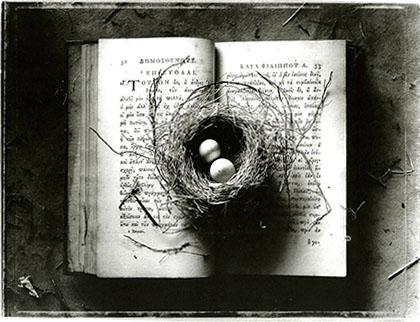
Enjoy this collection of quotes by photographer Sean Kernan.
“Somehow the pictures that work out just the way I wanted them to are the ones I lose interest in soonest. The expectation has become the limit. And I think that the way to take something beyond your own expectations is to leave what you see unnamed and beyond concept for as long as you can. I want to work as far beyond what I know as I can get, and the gate to that beyond lies exactly between seeing and naming.” – Sean Kernan
“I have to say that what is revealed to me lies beyond any ideas I had for the pictures.” – Sean Kernan
“I think that I began by wanting to see what kind of pictures this intense way of working might produce, and honestly I didn’t have any idea beyond that. There was no planned outcome, none of what I recently heard a composer call “The Fallacy of Intention.” – Sean Kernan
“The benefits of chance are enormous, but you have to watch out for them too. Chance gets me beyond whatever I had in mind when I started to work. It comes into play when I let things happen and then chase alongside them and grasp them on the fly. It’s like two acrobats, one of whom doesn’t know that he’s an acrobat. But the artist is responsible to what chance gives him, and just setting it down without taking it in and manifesting it again in the heuristic process is not enough. Maybe it’s that chance is happening all the damn time, and it’s the artist’s intentional work with it that strains artworks out of the soup.” – Sean Kernan
“I’d love to say something more intelligent about this, but I don’t know that the process had much intelligence in it.” – Sean Kernan
“I’m inclining toward the idea that the working process of art is a lot more thoughtless than I once imagined – thoughtless but not stupid.” – Sean Kernan
The process is in the elimination of conceptions and cleansing the mind, then in claiming the awareness and manifesting it in a work.” – Sean Kernan
“So you want to float in that space of awareness as long as you can, keeping all possibilities alive so they can become clearer, then you pull down one that is BOTH unexpected and makes perfect sense.” – Sean Kernan
“It is the unexpectedness of the image that wakes us up so we really see something, and the rightness of the image that affirms what we have seen in the mind’s eye.” – Sean Kernan
“So if every thing looks right and it still feels wrong, or lacks resonance, or if it refers mainly to other photography and not to seeing, to awareness itself, you should sniff elsewhere.
“The first question I tell students to ask in the first critique of a class is not is the work good, but is it alive ?” – Sean Kernan
“You can see it in a great actors work – look at De Niro, or Streep, or Arkin. They can just stare into the air and you’ll sit and watch them, watch their intensity. And I realized that some of the best photographers I know have that same kind of intensity. It shows in their work. Their intense staring generates its own power, and we respond by staring with them.” – Sean Kernan
“I have a real appreciation these days for work that abrades me into awareness.” – Sean Kernan
Learn more about Sean Kernan here.
View 12 Great Photographs By Sean Kernan here.
View video by Sean Kernan here.
View 12 Photographs Celebrated By Sean Kernan here.
Read more Great Quotes By Photographers here.
12 Photographs Celebrated By Sean Kernan
Sean Kernan’s The Secret Books
Sean Kernan makes insightful comments on twelve photographs.
“At this point I most respond to things that stir me to a kind of seeing that I didn’t think I could do. They make me want to try, even though I have no idea where or how to begin. This group contains work from major artists and workshop students, proving that anyone can break through.” – Sean Kernan
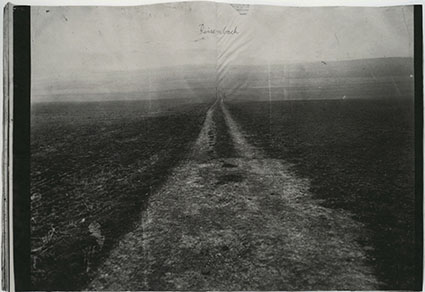
Anselm Keifer. I love this artist’s work, and in particular his books, of which this is one. The distressing of the photographic image and its inclusion in a book makes me think it’s a history of the end of the world…that has been left out in the atomic rain.
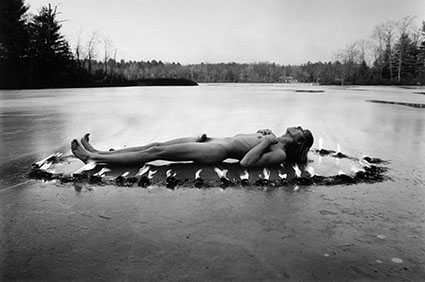
Arno Minkinnen. Arno’s “subject” has been his body for so long that he has found the deepest caves of the mind. They are not only what he thinks but of what they make me think. In this case I see some Finnish shamanistic ritual that takes place at the threshold of life/death, with passage going either way.
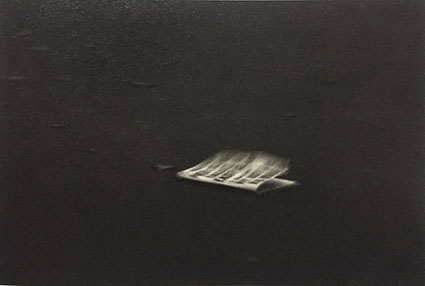
Diane Arbus. This seems to sum up all the mystery of her seeing. The more you think and say about this image, the further afield you drift. Just look at it and shut up.
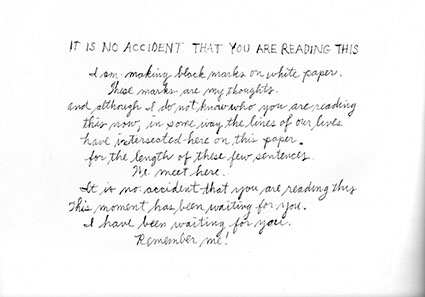
Duane Michals. So often we look at a photograph. Here we start to read it and realize that we are being drawn in as a player, as a subject of the…picture. And so is anyone else who looks at it. Fantastic!
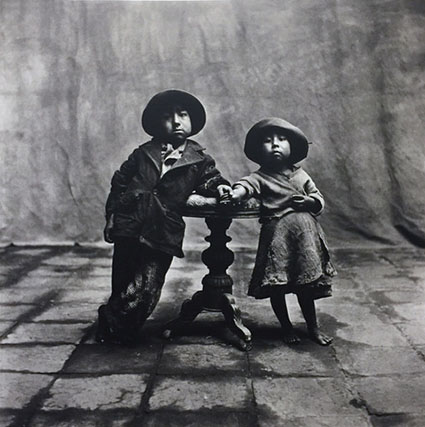
Irving Penn. This photo knocked me out when I saw it. It is not documentary. Instead Penn has bridged the world of the highland Quechuan Indians of Peru and the formality of Brozino, the great Rennaisance portraitist.
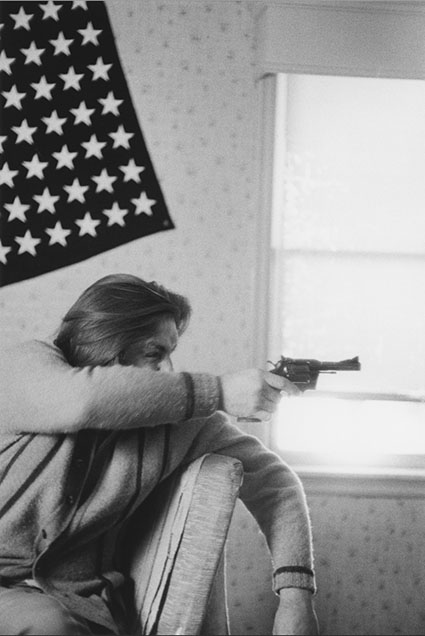
Larry Clark. Photographers love to visit other worlds (see Penn, above), but Larry lived in the drug world and he had a camera. Tough, tough pictures. To learn more, read Dennis Johnson’s book, Jesus’ Son.
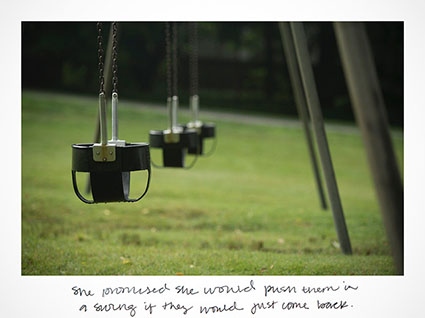
Michelle Elloway. This picture started as a workshop assignment to photograph a place where something had happened. I said nothing about writing down what it was that had happened, but the photographer blew the class away by writing the results of the event, turning the whole thing into a chilling Shirley-Jackson moment. (If you don’t know Shirley Jackson, read The Lottery.
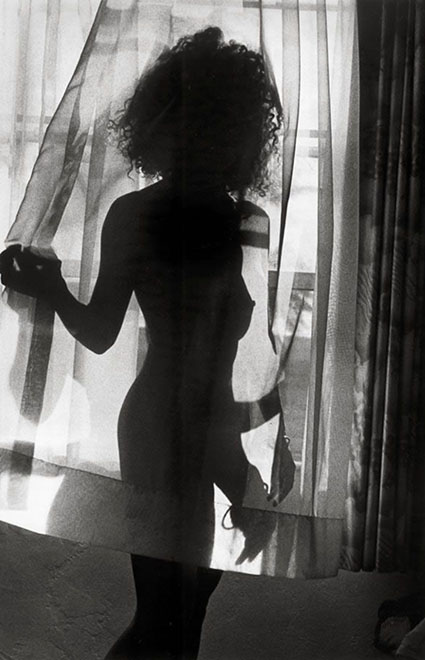
Ralph Gibson. Ralph’s work is sui generis, very simple, graphic and pregnant. This photo isn’t really like that, thanks to that wavering curtain, I think.
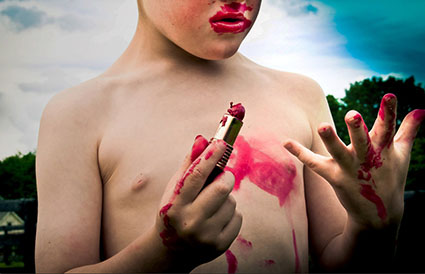
Rebecca Biddle Mossman. I love pictures that get beyond thinking. I am sure that the photographer just started off the situation, then saw something and pushed it, then just let it happen. (That’s my guess.) It’s the best way of working, and it leads to photos that you can’t believe you took.
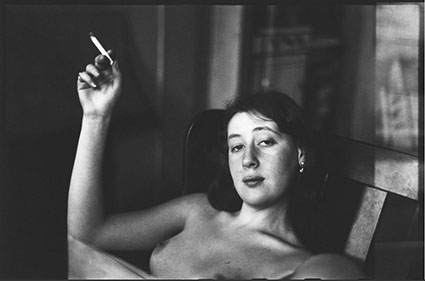
Saul Leiter. I’m giving him three, because he is new to me and because he has a freedom that I wish I had! The first is just saucy, impudent, sexy and innocent. I look at this woman and I just want to give her a shirt and take her out for coffee. She’s young in the picture, but I’d still love to meet her and say “So, tell me about your life.”
Or maybe not. Maybe it’s better to just suspend in the moment.
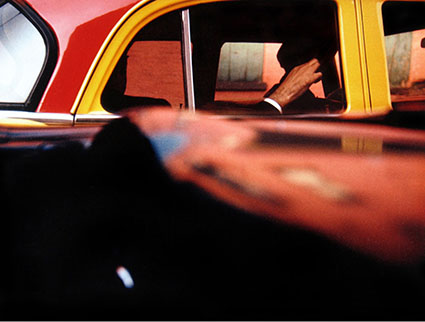
Saul Leiter. The second Leiter is just…ah…like watching a juggler make a perfect catch from completely off center.
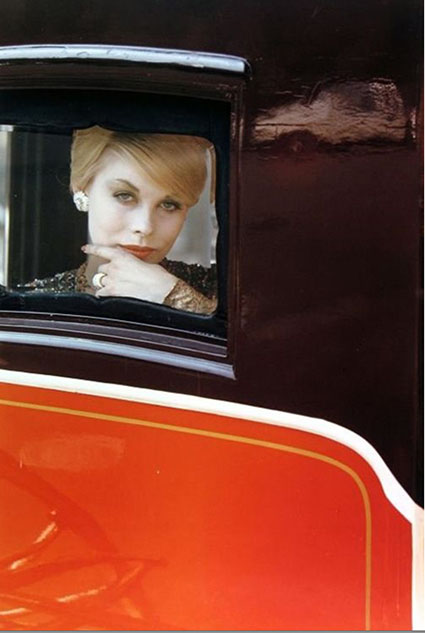
Saul Leiter. The third Leiter brings together three entirely different kind of images and resolves them while somehow leaving them intact.
Learn more about Sean Kernan here.
View 12 Great Photographs By Sean Kernan here.
Celebrating Women In Photography
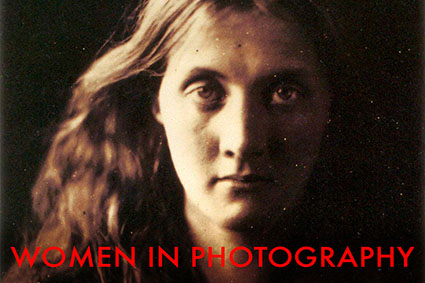
To celebrate Women’s History Month, here’s a selection of the many documentaries on women photographers I’ve collected and shared over the years.
Plus, you’ll find links to quotes and image collections at the end.
Diane Arbus| View
Ruth Bernhard | View
Laura Gilpin | View
Nan Goldin | View
Lauren Greenfield | View
Lois Greenfield | View
Annie Leibovitz | View 1 | View 2
Sally Mann | View 1 | View 2 | View 3
Mary Ellen Mark | View
Cristina Mittermeier | View
Tina Modotti | View
Sarah Moon | View
Elizabeth Opalenik | View
Cindy Sherman | View
Joyce Tenneson | View 1 | View 2
View more on B&H’s Women Of Influence.


